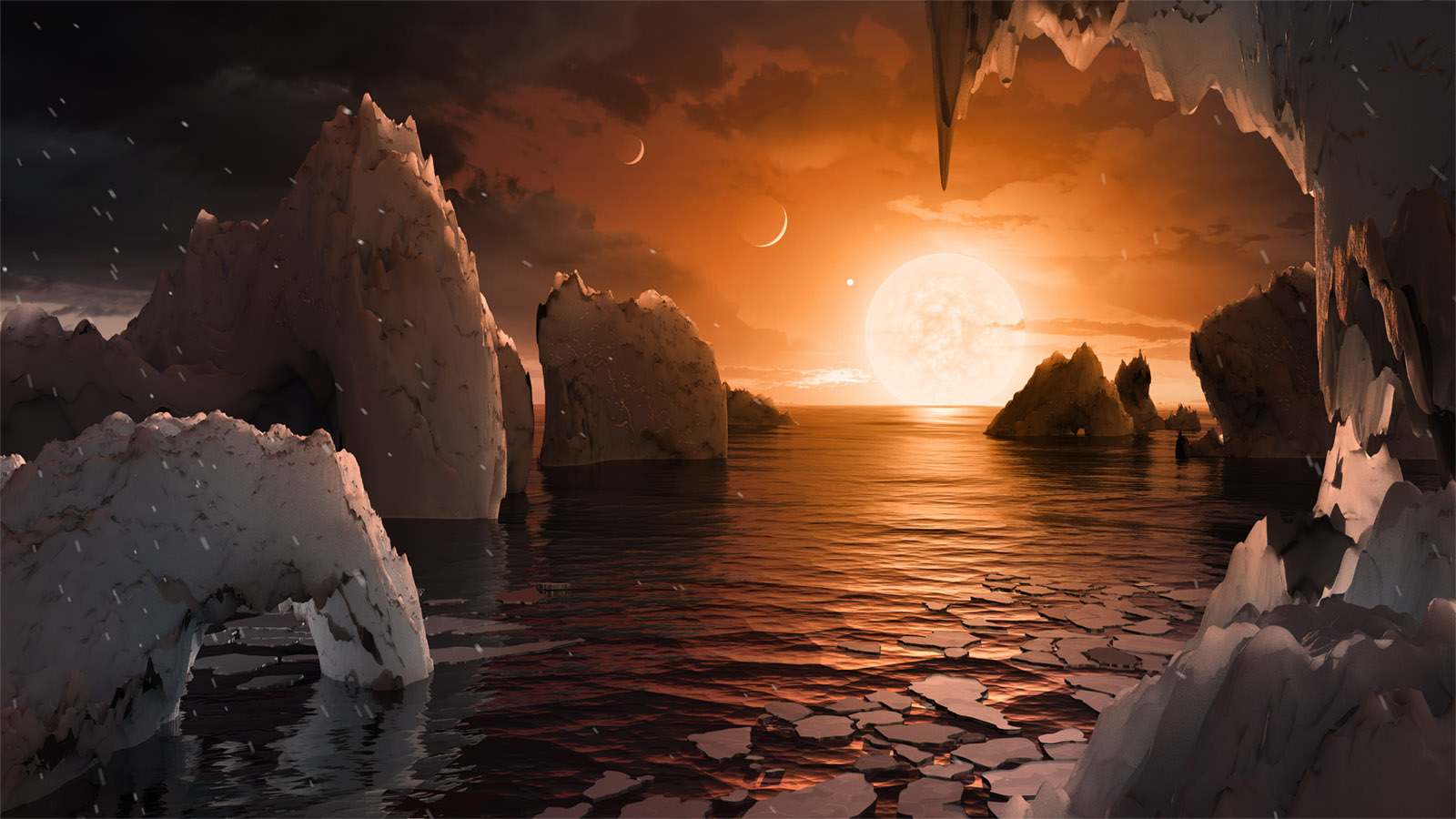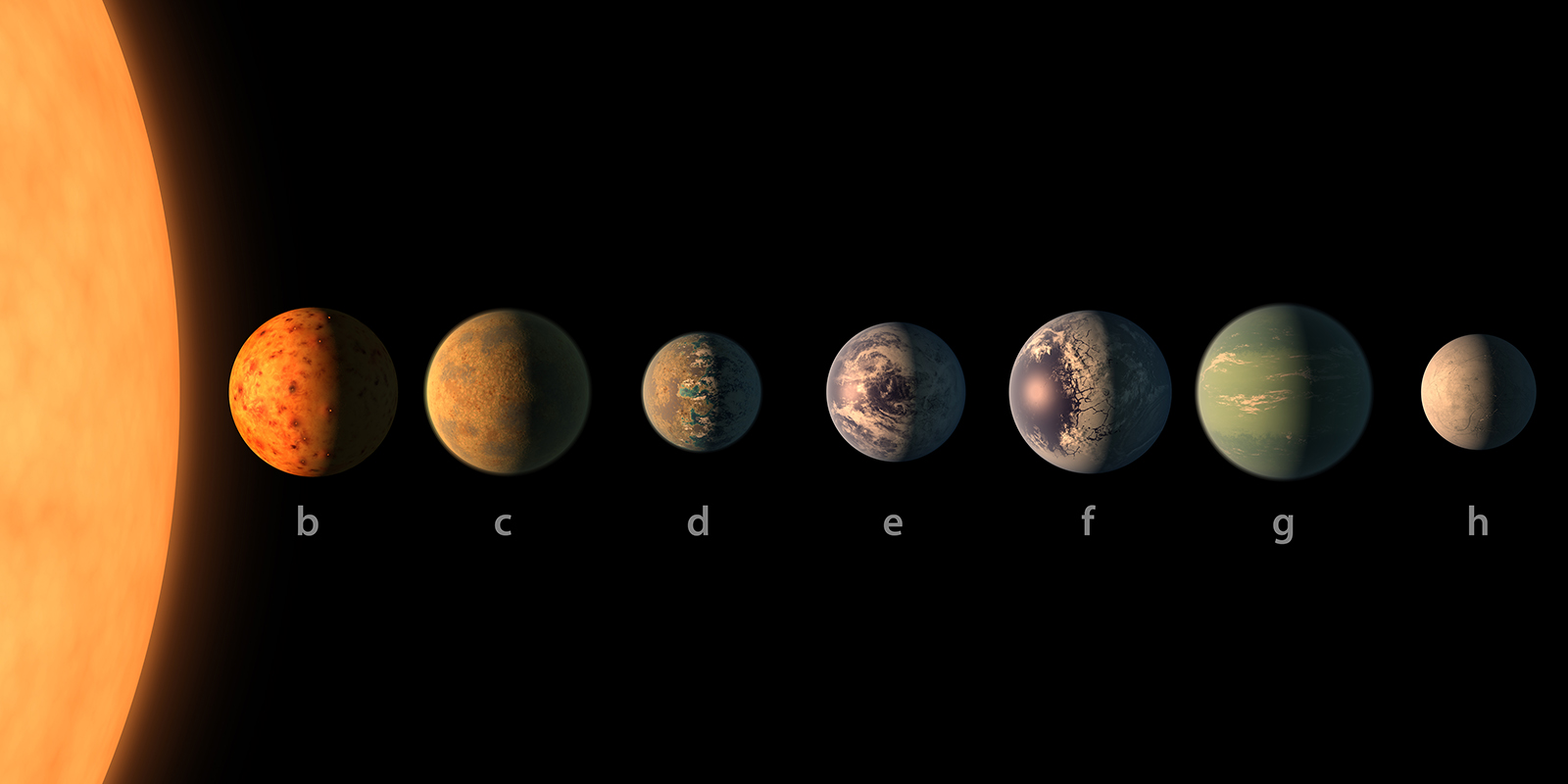[ad_1]
Scientists are torn on whether extraterrestrial life is abundant, rare or nonexistent. With 300 billion stars in the Milky Way, the late astronomer and futurist Carl Sagan figured there could be up to 10,000 advanced civilizations in our galaxy alone. Others, however, think not only are habitable planets rarer than thought, the odds of life forming are slight even on a promising world. In other words, we might be completely alone in our galaxy or even the universe.
Despite pessimism among some researchers, NASA has often implied that if a planet has the same conditions as Earth, it will automatically have life. “I see that as a marketing thing by NASA to interest people in planetary searches,” said astronomer Caleb Scharf, who co-authored a paper on the odds of life forming on a planet. “I think [the chances] could be a lot lower, personally.”
That’s reinforced by another stark reality. “We haven’t seen life everywhere we’ve looked so far,” said astrobiologist Lauri Barge. “If life really requires some unique conditions to emerge, obviously Earth had them, but how many other planets would have them?”
So alien life might be out there, but there’s a very good chance that it’s not. Researchers are excited about either outcome and believe we’re about to enter a golden age of planetary discovery. “Whether or not I’m optimistic that any life is out there, I am very optimistic that we’re going to find out [either way],” NASA exoplanet researcher Shawn Domagal-Goldman told Engadget. “And I don’t think we’ve ever had a moment like this in the history of our species.”
The hunt for habitable exoplanets

Our prospects of finding alien life will explode in the next decade. NASA is on a tear hunting “exoplanets” — planets orbiting stars outside our solar system — with the satellites Spitzer, Hubble and particularly Kepler, launched in 2009. So far, the latter has discovered 2,335 exoplanets, 21 of which are in their star’s habitable regions, and just the right size and mass for life. The most famous of those is Trappist-1, a seven-planet system discovered in February. It’s just 40 light-years from Earth, and as many as three of its planets are in the “Goldilocks zone.”
The Trappist-1 exoplanets will be one of the first targets of the $8.7 billion James Webb space telescope (JWST), set to launch in 2018. That instrument, parked a million miles from Earth, will be able to analyze the spectrum of exoplanet atmospheres to search for “biomarkers,” or signs of life.
“If I was talking to you before [Trappist-1], I’d have said don’t count on looking at the atmospheres of exoplanets, because you need darn-near-perfect targets,” Domagal-Goldman said. “The Trappist planets are darn-near-perfect targets.”
What exactly are we looking for?
Biologists don’t even know how life sprang up on Earth, let alone elsewhere. It could have come via a process called abiogenesis, where life evolves via an electrochemical process from inert organic chemicals. Or it could have formed with “panspermia,” in which simple life forms are ripped from one planet by a giant collision, survive a freezing ride through space and eventually collide into another planet, where they thrive anew. (“That’s just outsourcing the problem,” noted Scharf.)
We can’t see exoplanets with a telescope — they’re too small, too far away and too overwhelmed by the light of their stars. If they pass in front of a star, however, Kepler can detect the star’s dimming using the “transit method.” Based on how much and how often the light dips, along with any wobble in the star, astronomers can figure out the planet’s approximate size, mass and distance from its sun. Using stellar radiation models (that give the energy different stars emit) they can even estimate its surface temperature.
That’s enough to figure out whether a planet is habitable. An ideal candidate has a temperature that supports liquid water and is less than twice the mass of Earth. That way, it’s likely to have a rocky surface and gravity that won’t crush nascent life.
Once a candidate is spotted, NASA will try to analyze its atmosphere. As it happens, Trappist-1 is an ideal study for the JWST because its relatively dim red dwarf star doesn’t flood the planets around with light like larger stars do.
JWST’s main instruments for sussing out Trappist-1 atmospheres will be its NIRCAM and NIRISS near-infrared cameras. When planets pass in front of the star, light will filter through their atmospheres and the instruments will pick out signature wavelengths of distinct chemicals. The cameras will particularly seek “biomarker” chemicals like ozone and methane (though that won’t be easy), which usually exist only in the presence of organic life. Ozone, for one, is formed when oxygen produced by plants or phytoplankton is hit by ultraviolet light.
Either the presence or lack of an atmosphere on Trappist-1 will be of keen interest to scientists. “I want to know why those planets are uninhabitable,” said Domagal-Goldman. “Is it because their atmospheres were stripped? Is it because they had some runaway greenhouse process that they never recovered from?”
The JWST won’t be the only NASA instrument hunting life. The Transiting Exoplanet Survey Satellite (TESS) will also launch in 2018, searching for exoplanets around nearby stars. Like Kepler, it’ll spot them using the transit method. Unlike Kepler, though, it’ll scan very bright stars relatively close to Earth. Since those are up to 100 times more luminous than the ones observed by Kepler, it’ll make follow-up observations by the JWST or Earth-based telescopes much easier, NASA said.
In the mid-2020s, NASA will launch WFIRST, a space telescope with a field of view 100 times wider than Hubble. That instrument will also do spectroscopic scans of exoplanets, but with much more detail than the JWST. Not only is it more powerful, it can better block out the glare of stars, giving it a clearer view of the exoplanets.
Along with those instruments, NASA is hunting exoplanets using the ground-based Large Binocular Telescope Interferometer, Spitzer Space Telescope and, yes, the Hubble Space Telescope. Its basic strategy is to find habitable exoplanet candidates using the transit method, then scan their atmospheres using spectroscopes via the erstwhile Hubble (recently repurposed for the task), JWST, WFIRST and large ground telescopes.
A closer look at Trappist-1e

The best potential candidate of Trappist-1’s seven planets is Trappist-1e. Its mass and size are similar to Earth (92 percent of its radius and 62 percent of mass), and its estimated average surface temperature, based on the dose of solar radiation it receives (but not taking into account greenhouse-gas effects) is nearly the same.
However, it’s much closer to its cool, red-dwarf star than the Earth is to the sun, and orbits it just once every six days. Worlds that close to their stars are normally “tidally locked” to them, like the moon is to our world, always showing the same face to it.
That adds a degree of difficulty for life. “There are a lot of theoretical reasons why life there could be challenging,” Domagal-Goldman said. “And that ranges from tidal-locking and the potential for constant radiation on one side of the planet as well as constant night on the other side.”
That’s typical with dwarf-star planetary systems, which must stick close to their stars to be habitable. If it turns out that life isn’t likely around a small red or brown dwarf star, scientists will have to figure out better observational techniques for hotter yellow dwarf stars like ours.
We’re still not sure about the effects that close proximity and tidal-locking will have on Trappist-1 planets. If you look at our own solar system’s three planets in the Goldilocks zone, Venus has a suffocating atmosphere that creates crushing pressures and a surface temperature of 863 degrees F. Mars, meanwhile lost a big chunk of its atmosphere thanks to solar winds and no protective magnetic shield, causing all its surface water to disappear. Only Earth struck that perfect balance between greenhouse heating and solar radiation for liquid water and temperatures that sustain life.
On the other hand, Trappist-1e’s short year could be an advantage. Its day is probably as long as its year, once every six Earth days. “That means that there’s potentially enough angular momentum to impart to the atmospheric oceans, and that will do a better job of circulating heat to the dark side,” said Domagal-Goldman.
With the JWST, scientists will be able to examine Trappist-1e’s atmosphere and compare the results to its temperature, mass, size, orbit and more. That will help them figure out how livable it could be, and also aid in picking out future star-system candidates for observation.
The worse-case observation will be no atmosphere at all, while the second-best would be life-support molecules like CO2 and oxygen. In the best-case scenario, JWST will find biomarker molecules like methane and ozone — a very positive, but not guaranteed, sign of life.
Those results can then be used on Earth, and that’s where abiogenesis life-formation science come in. Any discoveries made in deep space will help astrobiologists understand what kind atmospheres they should simulate in their Earthbound experiments.
Life in the electrochemical soup
Source link
 Tech News code
Tech News code


